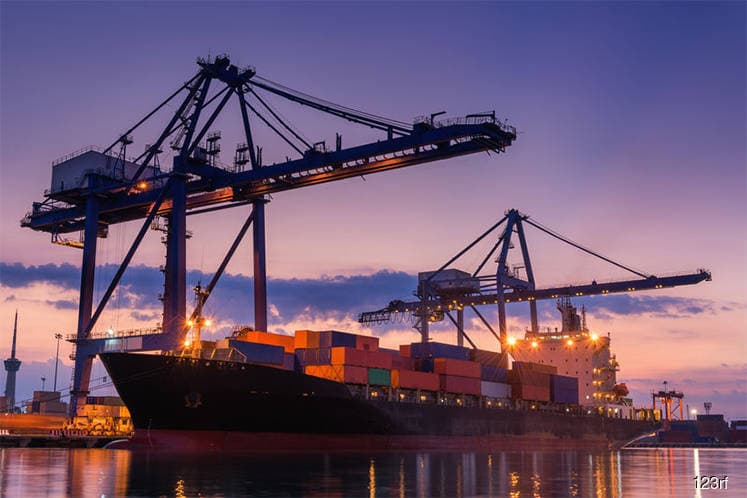
This article first appeared in The Edge Financial Daily on December 5, 2019
KUALA LUMPUR: Malaysia’s exports in October declined 6.7% year-on-year (y-o-y), but the total exports of RM90.6 billion for the month is the highest monthly figure for the year and came in above expectations, according to economists.
In announcing the latest trade figures yesterday, the Department of Statistics said the country registered higher exports to Singapore, Taiwan, the US and Russian while lower exports were recorded to Australia, China, Japan, Thailand and India.
The y-o-y decline, it said, was due to a high base effect, as the country achieved RM97.12 billion worth of exports in October last year — its highest monthly figure. Imports for the month this year, on the other hand, fell 8.7% to RM73.3 billion from the same month last year, due mainly to a decline in capital goods, consumption goods and intermediate goods.
The weaker imports, relative to exports, resulted in a 2.8% increase in trade surplus to RM17.33 billion — the largest monthly surplus ever recorded — from RM16.85 billion previously. This raised the year-to-date trade surplus to RM118.2 billion — up 13.3% from the same period last year — making it the highest trade surplus for the January-October period since 2009.
“[The export number] came in better than what we expected. Historically, October would see a gain but because of the high base effect when compared to the same period last year, it contracted y-o-y,” Kenanga Investment Bank economist Wan Suhaimie Mohd Saidie told The Edge Financial Daily, adding that the ongoing trade war has also distorted the picture.
But he expects the downtrend in exports to continue for the remainder of the year, given the stalled trade talks between the two largest economies in the world as US President Donald Trump said a trade deal with China could wait until after the US presidential election, which is slated for Nov 3, 2020.
“If nothing is agreed on by Dec 15, Trump is determined to slap full tariff rates on China,” he noted.
Still, export growth should rebound next year, said Wan Suhaimie, as the US economy is expected to hold up ahead of the presidential election.
“Furthermore, there could be some recovery in the global semiconductor demand on increased 5G-related spending, and palm oil export receipts [should] improve as prices and demand are expected to be slightly better.
“We forecast exports to grow between 3% and 5% in 2020, from the 1% to 2% decline in 2019,” he said.
UOB Malaysia senior economist Julia Goh, meanwhile, said the 6.7% contraction in October exports is smaller than the 14.8% forecasted by the research house, and the 12.3% by the market.
In addition, export figure is up sharply month-on-month, with an increase of RM12.9 billion or 16.6% from September, she said, which could be attributed to the potential front-loading of purchases ahead of the US tariffs on US$160 billion (RM668.8 billion) worth of Chinese products on Dec 15, and the normalisation of activity after the shorter working month in September.
But again, given the uncertainties surrounding the US-China trade talks, UOB remains cautious about the export outlook for the remaining two months of 2019 as well as 2020. As such, it is maintaining its full-year export forecast of a 1% contraction in 2019, before recovering with a 2% growth in 2020.
“The projected recovery next year is expected to be softer relative to past cycles amid the prolonged US-China trade disputes, potential widening of trade disputes to other countries, and the global technology down cycle that may drag until mid-2020,” wrote Goh in a note.
In contrast, RHB Investment Bank economist Ahmad Nazmi Idrus is more positive on 2019’s total export growth, which he expects to come in at 2.2%, as an improvement in global semiconductor sales may point to a recovery of the sector, despite the weakness in electrical and electronic exports. His optimism is more muted for 2020, when he expects export growth to slow to 1.5%, as he echoes the potential downside risk posed by the ongoing US-China trade war on trade and economic growth for the coming year.